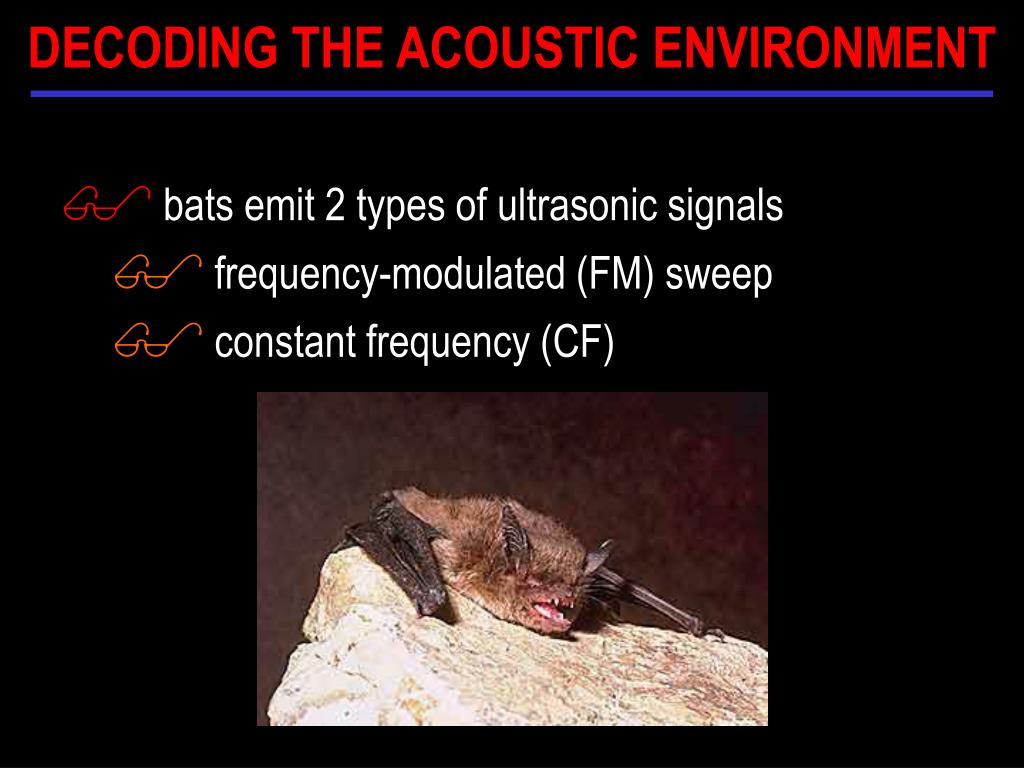

At the same time, information leakage is a primary disadvantage of echolocation. Conversely, many non-echolocating animals use ultrasonic sounds for intraspecific communication.Ī primary advantage of echolocation is that it allows animals to operate and orient in uncertain lighting conditions.

Many animals echolocate by signals fully or partly composed of frequencies readily audible to humans, such as the clicks of some odontocetes, certain bat species, and birds. Echolocation and ultrasound are not inherently linked. Several robust protocols exist for assessing echolocation ability and capacity in terrestrial and marine animals (Griffin 1958 Norris et al. Griffin ( 1944, 1958) verified this idea much later when he demonstrated that bats produce ultrasonic sounds to collect information about their surroundings and concluded that “echolocation is an eye-opening discovery about animal behavior.”ĭemonstrating echolocation behavior means showing that the animal uses echoes of their outgoing sounds to locate and identify objects in their path. The discovery of echolocation traces back to Lazzaro Spallanzani’s suggestion in 1794 that bats could “see” with their ears. Echo feedback may also provide functional sensory abilities in shrews and tenrecs.
BAT AUDITORY SENSITIVITY DRIVER
These are all habitats characterized by limited visibility, likely a key evolutionary driver for echolocation. In addition, soft-furred tree mice use echolocation in darkness for orientation (He et al. Echolocation (also known as biosonar) is used by most bats, odontocetes (toothed whales), oilbirds, and some swiftlets to negotiate, respectively, night skies, deep waters, or dark caves. Using this approach, echolocators can determine the direction and distance to an object, the type of object, and whether it is moving or stationary. Echolocating animals emit sound signals and perceive their surroundings by way of the returned echoes. The signals used in echolocation are audible to many other animals, such as competing conspecifics, predators, and prey.Įcholocation, a term coined by Griffin ( 1944, 1958), is an active sensory system. However, three families of bats can tolerate pulse-echo overlap and use the Doppler shift to identify prey items.Ī primary advantage of echolocation is allowing animals to operate and orient independently of ambient light conditions. Most echolocators cannot broadcast and receive echolocation signals at the same time but separate each outgoing pulse from its returning echoes in time to detect the echoes and avoid masking caused by overlap with the outgoing signal. Most echolocators (i.e., a select group of bats, toothed whales, oilbirds, and swiftlets) use broadband clicks, but the majority of bats produce tonal echolocation signals of constant frequency, frequency modulation, or a combination of both. The authors emphasize that the ability to produce ultrasonic sounds does not necessarily imply an echolocation function. Echolocation has also been documented in oilbirds and swiftlets and a crude form of echo-based orientation may be present in tenrecs and shrews. Echolocation abilities have been studied intensively in bats and toothed whales, the two groups with the most sophisticated echolocation systems in terms of physiological specializations and performance. The differences between echolocation signals in air versus water are discussed. In this chapter, the authors review basic concepts about echolocation, the variety of animals known to echolocate, the production of echolocation signals, the different types of echolocation signals, the hearing anatomy, and how echolocating animals use echolocation.


 0 kommentar(er)
0 kommentar(er)
